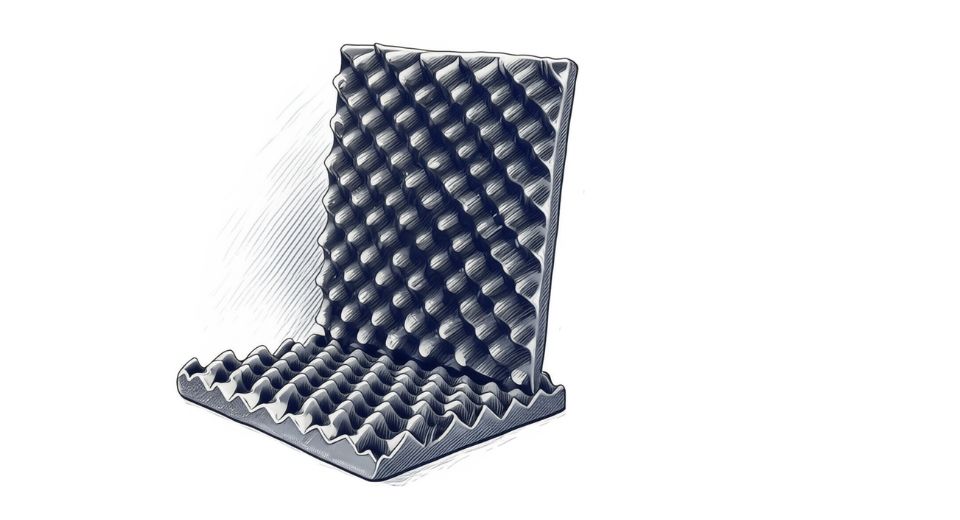
Jul 08, 2025

The report on the Global Acoustic Materials market published by Metastat Insight brings to light a sector that continues to shape the nature and performance of a large range of buildings. While the growing need to manage the quality of sound becomes increasingly evident in various sectors, acoustic materials have come to be used across a range of applications from public buildings to individual homes. These materials have long transcended their original applications in music studios or theatres. Now, they are found in commercial office spaces, transport, and even in domestic interiors, where individuals demand comfort and sharpness in their environment as well.
Global Acoustic Materials market is estimated to reach $3,443.10 million in 2025 with a CAGR of 4.4% from 2025 to 2032.
The makers are slowly turning their attention to producing items that infuse beauty with enhanced performance. There is today a strong trend towards surfaces and insulation layers that not only have sound-reducing properties but also complement the visual language of contemporary design. This has created a new wave of innovations in composition, shape, and application of acoustic materials that serve markets that appreciate both form and function. This transformation is not only restricted to major commercial projects; even residential works on a small scale are now focusing on managing noise and acoustic perfection.
Sound control is also, in architectural design, no longer merely an afterthought; it is considered a feature. Architects are more intentional about how they apply various kinds of materials in order to absorb, diffuse, or segregate sound in particular areas. The number of acoustic materials has expanded to suit this growing demand, ranging from natural fibers to engineered foams and composite layers. This selection lets end users respond to very particular challenges, whether they are controlling echo in atrium spaces or reducing machinery noise in industrial spaces.
Transport infrastructure has also discovered useful uses for these products. Electrified trains, electric cars, and even airplane interiors are now being equipped with panels and shields that control sound efficiently. The need for quieter, more comfortable spaces while in transit has driven additional innovation in this area. As passengers and commuters demand greater comfort levels, the position of acoustic materials has become even more significant.
Notably, the discussion around acoustic materials is also being influenced by issues that extend beyond sound. Energy efficiency, material sustainability, and indoor air quality are some of the other layers being taken into consideration. Developers and planners are choosing acoustic materials not just for their acoustic performance but also for how they contribute to other elements in the built environment. Some of the more recent entrants tout recycled content or production via low-emission processes, which is attractive to commercial and ethical sensibilities alike.
Consumer electronics are another area where acoustic materials have a behind-the-scenes but indispensable presence. Audio products intended for individual use, including headphones, speakers, and even smartphones, contain materials that deal with vibration, block sound leakage, and improve clarity. Even if invisible to the user, all these pieces of functionality are at the heart of delivering and experiencing audio. As product engineers strive to extend performance boundaries even further while still delivering compact sizes, acoustic solutions must be optimized to satisfy very strict dimensional and performance requirements.
Where all of this meets utility, fashion, and technology is opening up new doors for the procurement and application of acoustic materials. Where workspaces are hybrid, public spaces are multiuse, and transportation infrastructure expands and connects at a rapid pace, the acoustic demands on these spaces increase in tandem. This has prompted suppliers and solution providers to work more directly with architects, engineers, and designers from initial project planning. The result is an increasingly customized and deliberate application of materials for distinct acoustic functions.
According to Metastat Insight's exhaustive report on the Global Acoustic Materials market, this segment of industry indicates a reorientation in priorities and sensitivity. No longer confined to niche applications, acoustic solutions are becoming routine practice in planning and development plans. This change highlights the larger understanding of the importance of controlled sound environments to wellness, productivity, and functionality. Looking ahead, it is clear that acoustic materials will continue to be important, and will even widen their impact, as designers and engineers continue looking for considered, effective means of influencing our experience through sound.
Drop us an email at:
Call us on:
+1 214 613 5758
+91 73850 57479